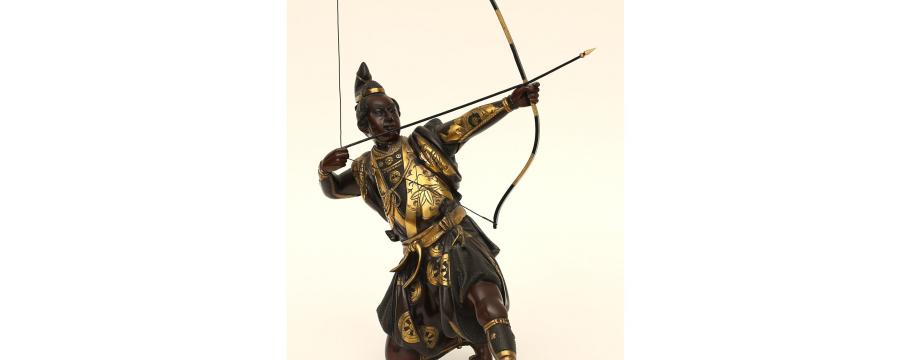
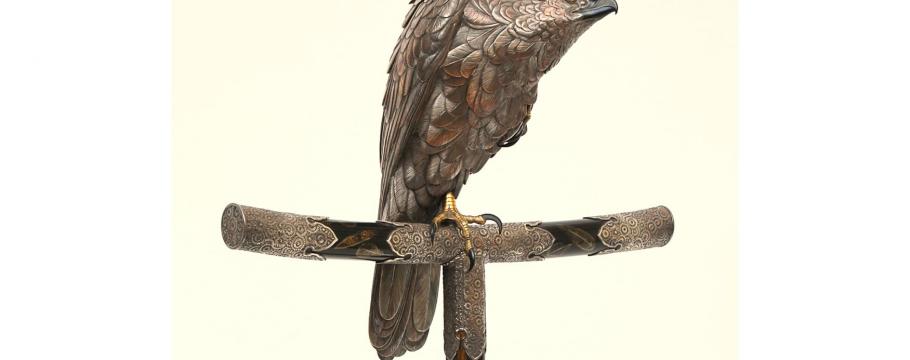
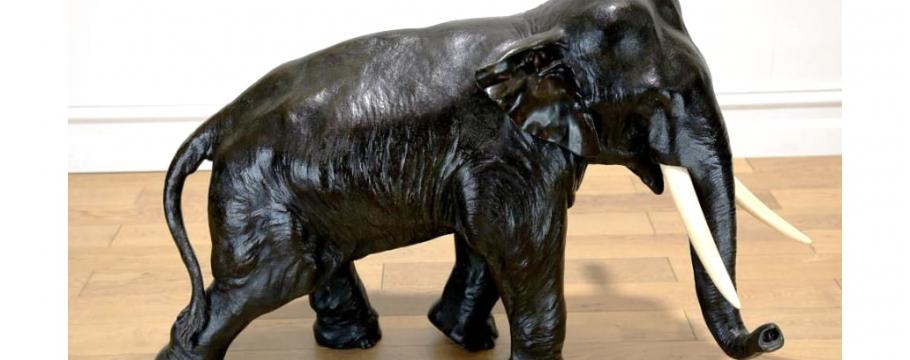




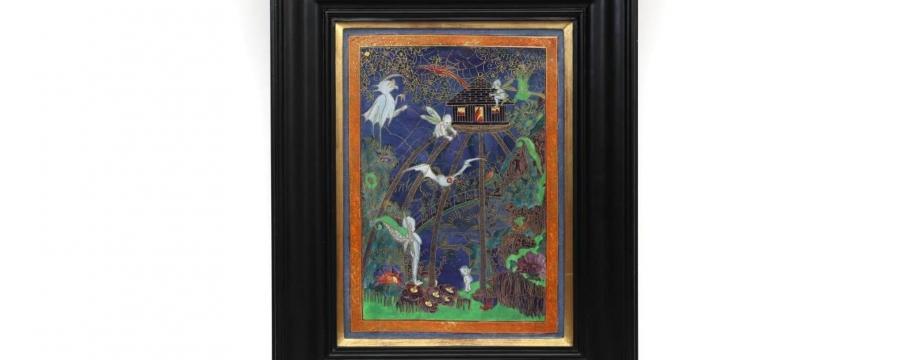
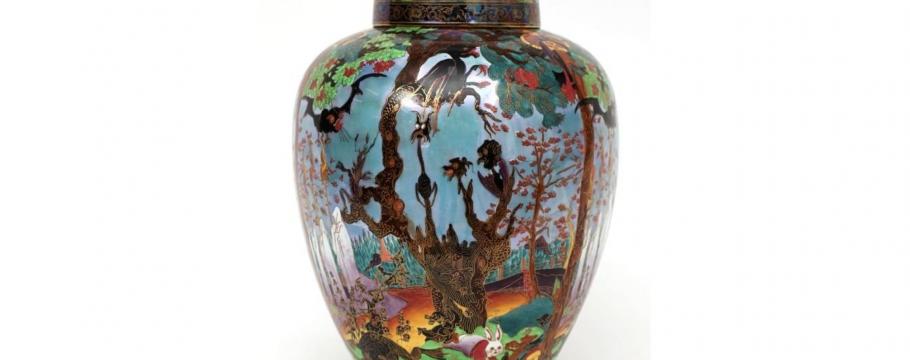

Japanese Meiji period masterpieces at Australian auction
Author: Richard Brewster | Posted: 11th November, 2024
From 5pm on Sunday November 17, Australian auctioneer Phil Caldwell will team up with Melbourne-based Christian McCann Auctions to sell Terry and Tena Wheeler ‘s collection of Japanese Meiji Period (1868-1912) masterpieces and rare porcelain at 7 Harper Street, Abbotsford.
The Wheeler collection almost never happened. English born, the family migrated in 1967 to the Western Australian mining town of Kambalda near Kalgoorlie to work for Western Mining Corporation.
A life-threatening severe dust allergy to their eldest daughter meant giving up the job and moving to the State capital Perth where Terry established an analytical laboratory for testing minerals that, by the time he sold it in 2008 to an international corporation, was the largest private mining assay company in the Southern Hemisphere.
Both husband and wife became hooked on Meiji Period, Royal Worcester and other porcelain manufacturers treasures after they attended a Perth auction in the late 1990s.
Caldwell sold the Wheelers Worcester collection over two auctions, the last being in November 2023. Their prize Worcester piece was a George Owen vase made for the 1893 Chicago Exhibition and valued at more than $200,000.
Collectors are unlikely to ever again obtain such a chance to buy the most exquisite Meiji Period items in one place – each item bearing the hallmark of renowned masters such as Namakawa, Kodenji, Kinkozan, Meizan and Ryozan – as they are at this forthcoming sale.
The Wheelers Japanese collection is of such unbelievable quality with an eye-catching bronze and gilt kneeling archer, arrow poised for release (lot 570), bound to be the subject of strong competition.
An important silver and lacquered koro sculpture in the form of hawk with gold and bronze feet perched on a silver stand (lot 565) will be a vital addition to any Meiji Period collection.
Likewise, a massive antique Japanese bronze bull elephant with original tusks signed by one of the most prominent Meiji Period bronze artists Dia Nhion Genrysai Saiya Zo and more than one metre long (lot 573).
Satsuma vases are a vital part of the Wheeler collection – with a tall conical shaped hand painted version (lot 548) depicting Matsushima Island signed by Yabu Meizan (1853-1934) a leading example.
Meizan’s studio produced high-end Satsuma ware mainly for export and he is regarded as the “prince” of this medium with his works today highly sought after.
Another quality Satsuma vase is a squat globular version carrying the impressive Kinkozan seal (lot 529). Associated with pottery since 1645, from the end of the 19th century the Kinkozan family became Japan’s largest Satsuma producer.
Hayashi Kodenji (1831-1915) was a Meiji Period pioneer craftsman who helped launch Japanese Cloisonne enamel vases onto the world stage. Lot 511, a fine pair of blue ovoid vases with flowers and butterflies on a cobalt blue background, is a great example of his work.
A pair of lidded iron vases (lot 566) signed with the Komai gold seal – signifying pattern-making with elaborate borders surrounding a pictorial central motif – is also a wonderful collectable, as is the Meiji Period four-fold table screen (lot 510) and miniature cabinet with gold inlay (lot 567).
For those collectors looking for quality Japanese Edo period (1650-1680) suits of armour, lot 575 is a great example. A major feature is the 62-plate kabuto (helmet), considered by samurais the strongest for battle.
The most significant auction item in the fine art and antiques section of the sale (beginning at 12pm) is sculptor Rafaello Monti’s (1818-1881) signed Buffalo Hunter (lot 39) – a large silver equestrian group of a native American Indian spearing a buffalo – made in 1972 for London’s Charles Frederick Hancock‘s – with a catalogue estimate of $50,000-$75,000.
Monti, who in 1846 moved to London after studying under his father Gaetano, achieved considerable acclaim for the sculpture for which Hancock’s were awarded the gold medal at the 1873 Vienna exposition.
A major attraction is the large antique Royal Doulton David Dewsberry painted and signed bell-shaped exhibition vase (lot 1) with a catalogue estimate of $30,000-$45,000.
Acknowledged as a master orchid painter and active at Doultons from 1889 to 1919, Dewsberry joined the company after training under the Alcocks at the Hill Pottery, Burslem – having won the first medal ever awarded to a student at the Wedgwood institute.
Lot 2 is another Dewsberry painted and signed two-handled lidded vase with a catalogue estimate of $20,000-$30,000, while two Daisy Makeig-Jones masterpieces – antique Wedgwood Fairyland Lustre framed plaque entitled Imps in treehouse (lot 12) and lidded ginger jar called Ghostly Wood, Malfrey (lot 13) – should attract plenty of attention from serious collectors.
Susannah Margaretta “Daisy” Makeig-Jones (1881-1945) was a Wedgwood pottery designer best-known for her Fairyland Lustre series, which she began producing in 1915 some six years after she joined the firm as an apprentice painter.
Viewing:
10am-5pm
Friday November 15 and Saturday November 16
9.30am-12pm
Sunday November 17





